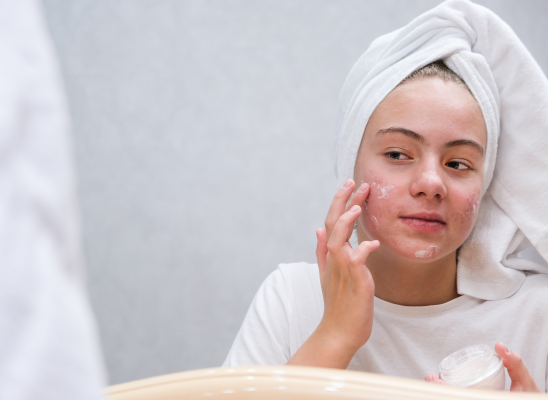Skin picking while driving

Online test
Find out the severity of your symptoms with this free online test
Driving is a prime environment for skin picking behavior, but competing responses can help. People who pick their skin fall into two categories:
- those who are fully focused when they do it
- and those who do it when they are not focused or zoned out.
Online Test for Skin Picking
How Severe is Your Picking Disorder? Find Out With This Free Online Test
Take the testDriving is one of those activities that many people do alone and as a private place, or it can become automatic allowing one’s thoughts to wander.
Habit Reversal Therapy
In habit reversal therapy, before considering replacement behaviors, you learn to recognize circumstances and locations that trigger picking. For many people, driving is a frequent location. Once triggers and behavior patterns are recognized, you learn and develop strategies to disrupt the behaviors you want to change. One of the strategies for disrupting behaviors is the development of competing responses.
Competing Responses
Competing responses are movements that are incompatible with habitual behaviors like skin picking. Think of something that is the opposite of the behavior you want to replace. It should be something you can do for longer than a couple of minutes and will be more less unnoticeable by others. It may be something challenging that you do with your hands, or something easy to do that just keeps your hands occupied.
Examples of competing responses that can be used while driving include:
- Clench your fists
- Sit on the hand you are not using to drive
- Put the hand not used for driving in your pocket
- Squeeze a stress ball, hand weight hinge, or other object
- Hold the steering with both hands at all times
- Snap your fingers with the hand that is not used for driving
- Hold your free hand under your armpit while you drive
- Run a string of beads through your fingers making sure to touch each one
- Practice 4-count breathing where you inhale and count to 4, hold count to 4, exhale count to 4, hold count to 4 and repeat all while counting in your mind.
- Wear gloves
- Have someone in the car with you when you’re driving
- Hold the hand of the person in the car with you (if appropriate)
- Place a fluffy cover on your steering wheel and pick at that instead

Image: Amazon.com
Find what works for you
Choosing effective competing responses is a process of trial and error. A suggestion is to track what you try and how it works. For example, maybe you have a 30-minute commute from work and your after-work commute is a usual time when you engage in picking behavior. As an experiment, for one week, pick a different competing response from the list above. On a piece of paper, write the day of the week, your mood when you leave work, the competing response you try, and how many times you felt the urge to pick at your skin. In addition, write down how many times you actually picked at your skin. At the end of the week, look at the results for the entire week to determine which competing behaviors seemed to work best. Then, try that one competing behavior for at least 3 days and track the results. After the 3 days, try the next successful competing response and track the results. Continue this process until you find the competing behaviors you like best, are easiest to implement, and have the best results. Skinpick.com created a free self-monitoring tracking app that can be downloaded on android and apple devices.
It takes time and consistent practice
Implementing competing responses takes some time and progress may be slow. Set reasonable, achievable goals for practicing the competing responses. When you achieve your goals, celebrate or reward yourself somehow. Keep track of all the goals you achieve and once a week or once a month, look back at what you achieved. Then you’ll notice the difference.
References
Rego, S. A. (2012). Beating body-focused repetitive behaviors: A two-pronged approach. Presentation at the Anxiety Disorders Association of American convention. Retrieved from https://www.adaa.org/sites/default/files/Rego%20194.pdf
Online test
Find out the severity of your symptoms with this free online test
Start your journey with SkinPick
Take control of your life and find freedom from skin picking through professional therapy and evidence-based behavioral techniques.
Start Now



